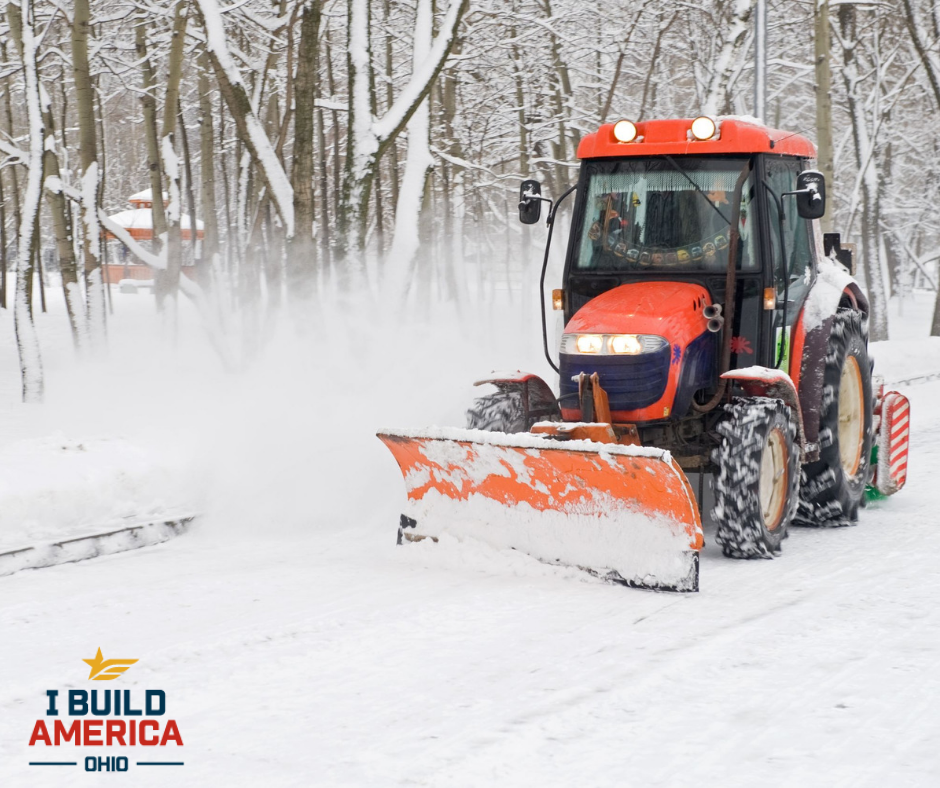
Over the past few weeks, Ohioans statewide have experienced some of the most erratic weather conditions to date. From record-breaking heat waves to early frosts, we’ve had to put up with it all. Not only does this back-and-forth in our weather conditions lead to seasonal sniffles for us midwesterners, it impacts our roadways, too.
This shift from sixty to snowing has taken a toll on our roadways throughout this year. Luckily, our construction workforce is dedicated to keeping our roads safe and smooth for truck drivers, carpoolers, and commuters alike. From concrete to asphalt, our highways and side streets must be repaired and resurfaced to stay in excellent condition throughout all four of Ohio’s seasons…even if that means experiencing all four seasonal shifts in one week.
Cold weather and the cycle between freezing and thawing can be very destructive on our highways, city streets, and back country roads. For starters, pavement materials are naturally more brittle in cold temperatures, are more prone to breaking easily, and tend to take on extra damage. Then, when snow and freezing rain get added to the mix, things can get really interesting for our roads. When water freezes, it expands by nearly 10%. So, if any water seeps into the pavement whatsoever, then freezes, the increase in volume leads to cracks and degradation.
Salting pavements is the most common solution for the coldest of days. Pre-salting prevents ice from accumulating on the roads while dry salting supports snow removal. While both are incredibly helpful for keeping our commutes on-time and visitors safe, they actually deteriorate pavement, both concrete and asphalt.
Each year, before and after the winter months, the construction industry works to rebuild and repair pavement. It’s an important preventative measure and necessary routine task.
Our busiest roads in urban areas need the most support. But, roads that need to stay open to busy daytime traffic are often stuck with an overnight patch repair, when roads can be fully closed without causing problems. But, patching only goes so far.
Skilled laborers complete a few processes to make our roads safer to drive year-round. In the case of concrete, the entire slab needs to be replaced when broken. Asphalt, on the other hand, can be repaired in one of a few ways:
Overlay:
This resurfacing adds a fresh layer of asphalt and years on the road’s longevity – up to 18 years! Though it takes the shortest amount of time to complete, it’s important that traffic be kept off the road for one day, at minimum.
Hot-in-Place:
This resurfacing is best for when there are only minor cracks or light damage and when the length of the road closure time needs to be minimal. It’s so efficient, roads can be reopened to traffic without delay, immediately after repairing.
Mill and Fill:
This resurfacing is the only option for fully degraded pavement with excessive cracks and structural damage extending beyond surface-level. The damaged asphalt must be removed before a fresh layer is applied, compacted, and cooled. The application process might be long, but drivers can hit the road within hours after resurfacing.
We need skilled laborers to complete all sorts of road resurfacing, repairing, and patching to keep our communities moving and progressing. If you’re interested in learning more about life in the construction industry, contact us. We – and all Ohio drivers – need you.